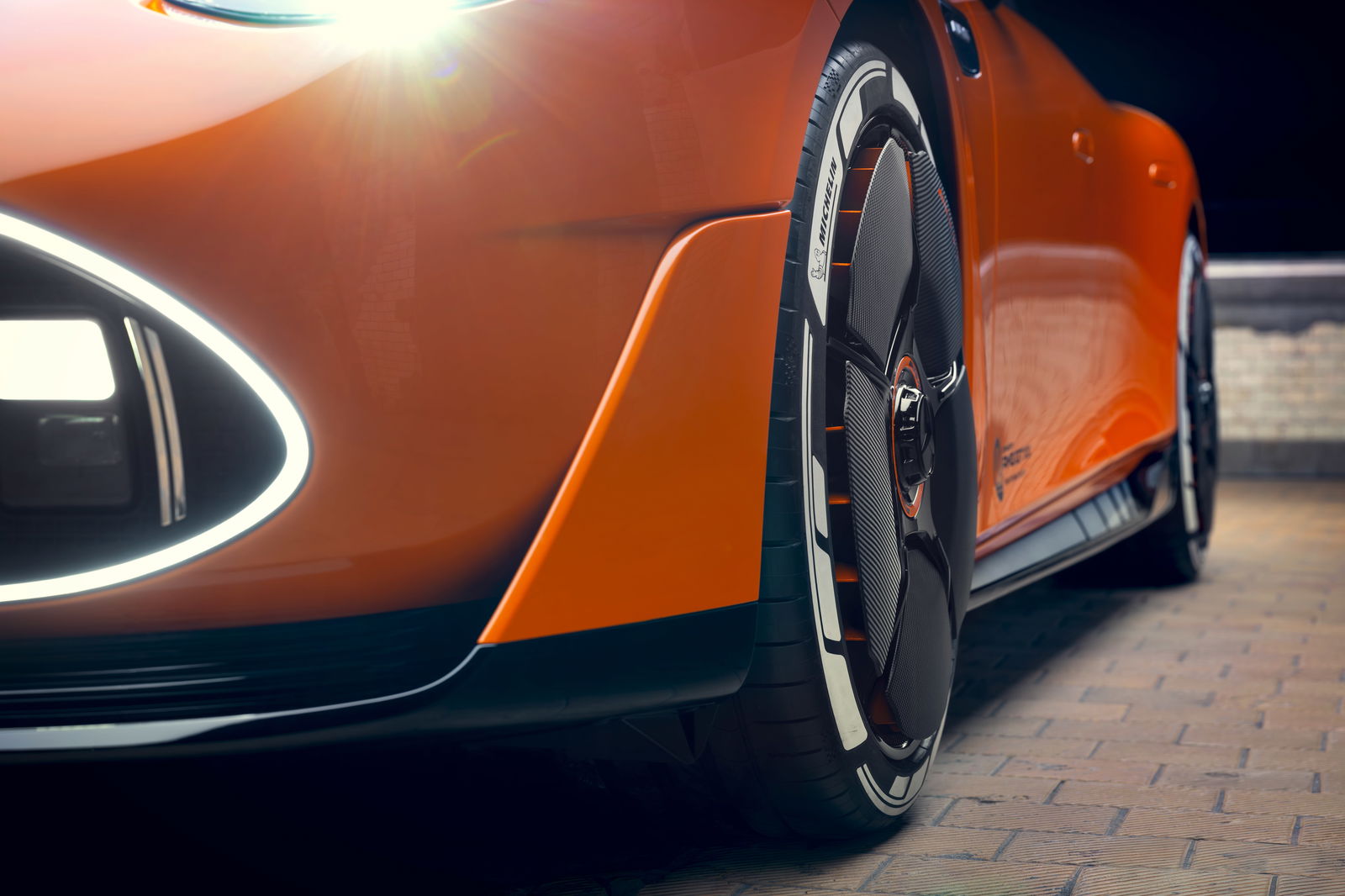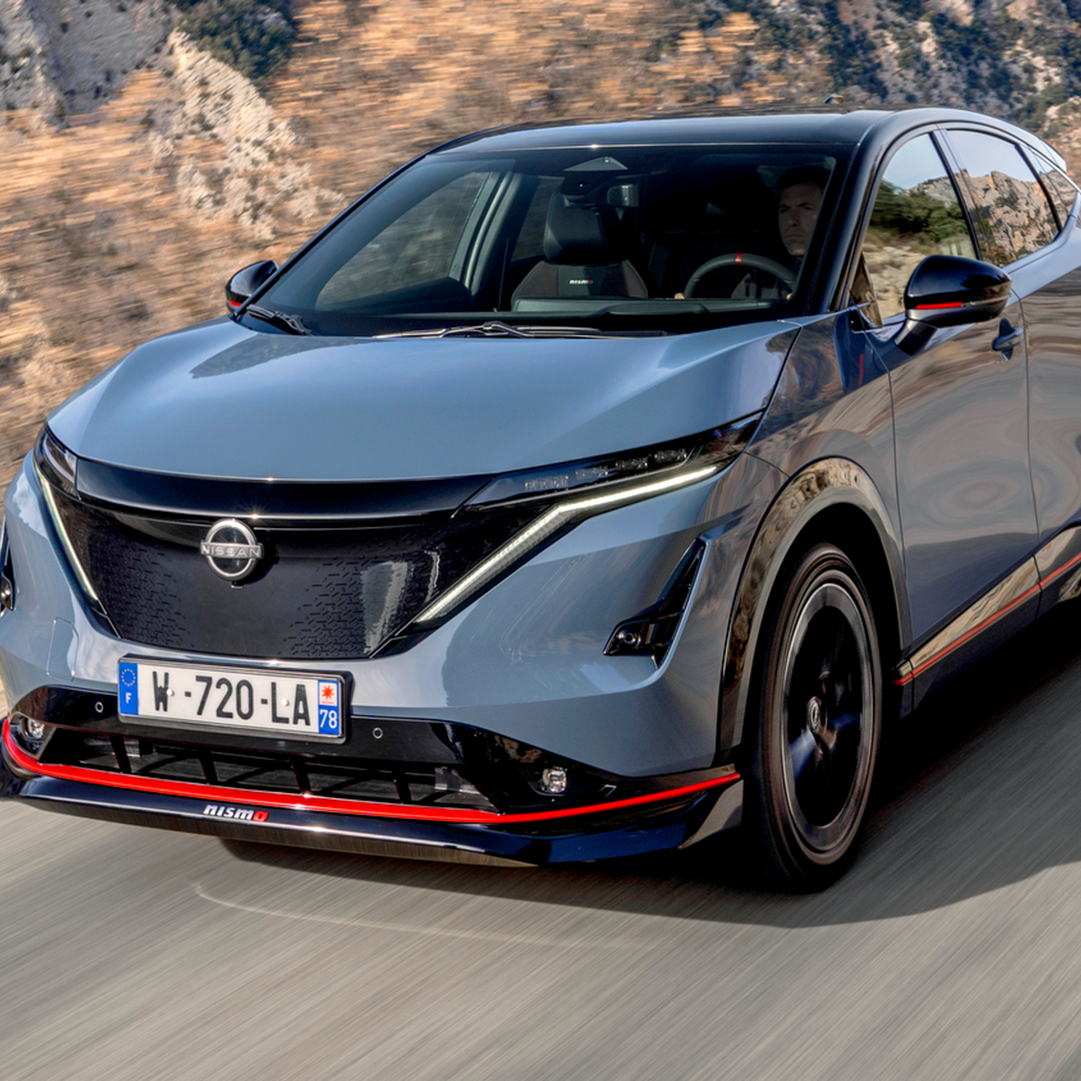6 Impressive Things About The Mercedes Concept AMG GT XX

It may not be the full production car Merc’s various teasers had led us to expect to see, but the Mercedes Concept AMG GT XX gives us a solid idea of what the first standalone series production EV from Affalterbach should look like when it arrives next year.
You’ve probably digested the headline numbers by now – three motors, upwards of 1341bhp, 223mph, and much orange. There’s a lot to unpack with this car though, some of which is projected to make it onto next year’s production version, so we’ve combed through the absolute unit of a press release and picked out six impressive things that caught our attention.
The motors could be a game changer for EVs

Pretty much every roadgoing EV ever has used the same basic design of motor – a radial flux. This basically means the passage of the motors’ magnetic flux is perpendicular to the rotation of the motors.
The AMG GT XX, though, uses radial flux motors, meaning the flux is parallel to the rotation. You don’t really need to understand this – you just need to know that axial flux motors can be made a lot more power-dense and lighter than traditional radial flux ones. All this is good for packaging and that old foe of making EVs fun to drive, weight.
While axial flux motors can be found in some high-performance hybrids like the Ferrari 296 and Lamborghini Revuelto, they’ve not yet been used in a roadgoing EV. The production version of the GT XX is set to be the first, and it could open the floodgates – AMG head honcho Michael Shiebe has told Road & Track that economies of scale could see these motors make their way into other, less high-end Mercedes EVs, and we wouldn’t be surprised to see other manufacturers follow suit.
It wants to make cooling cool

Mercedes has made a big song and dance about the cooling properties of the GT XX’s high-performance battery pack. The battery cells are of a new cylindrical design – tall, slim and narrow – which means the heat they generate under heavy use can be quickly dissipated.
Each of the more than 3000 battery cells is ensconced in a casing around which a specially-developed cooling liquid flows, its temperature controlled on-demand by a presumably deeply clever algorithm. It’s all very sciencey, but the results are easy to understand – better battery performance, a longer overall lifespan, and faster charging.
On that last point, Merc says the GT XX concept can recharge almost as quickly as it takes to fill a tank with petrol. It doesn’t give an exact figure, though, and that is using a special prototype high-current charger.
It’s as slippery as a greased snake

Well, we presume greased snakes are slippery. We’ve never tried greasing one – the RSPCA put a stop to that. Anyway, the GT XX takes aerodynamics very seriously, as any EV worth its salt should. You can see that just from how low and smooth it is, and also the lack of a rear windscreen – a fairly loathsome design trend, but one that does bring some genuine aero benefits.
Much of the downforce comes from underbody aero, with the design under there generating a Venturi effect in the style of an F1 car or the Aston Martin Valkyrie, gluing the car to the road without relying on big wings. The headline drag coefficient figure is 0.198 – for reference, the lowest-drag car currently on sale is Merc’s own EQS, with a coefficient of 0.20. And yes, lower numbers are better.
The wheels have active aero

Some of that impressive slipperiness comes from a design patented as part of this concept – moving aero blades on the wheels. They can lie flush for minimum drag, or open up under heavy braking to pass a cooling breeze over the discs’ fevered brow. Is this something we’ll see on the production car? Who knows, but it’s a neat idea.
The paint glows in the dark

Embedded in the parts of GT XX’s paint are pigments that react to an electrical current passed through them, and emit light. Merc basically admits that this is mostly to look cool at night, but it doubles up as a quick indication of charging status, the lights switching themselves off in segments as the car juices up. Basically, once your car stops glowing, you know it’s fully charged.
The design is more retro than you think

It may look like a very 2025 concept car, but the GT XX owes quite a lot to the early 1970s. See that slanting nose, the Kammtail rear with round lights, the two big cooling nostrils in the bonnet, the orange paint with contrasting black accents?
All these things are a callback to the C111, a rolling testbed prototype unveiled by Mercedes in 1970. Like the GT XX, that car was designed to showcase future technologies, but unlike the GT XX, it didn’t preview a specific production car. Oh, and fun fact, the original C111 actually had a triple-rotor Wankel engine. The GT XX, sadly, doesn’t.















Comments